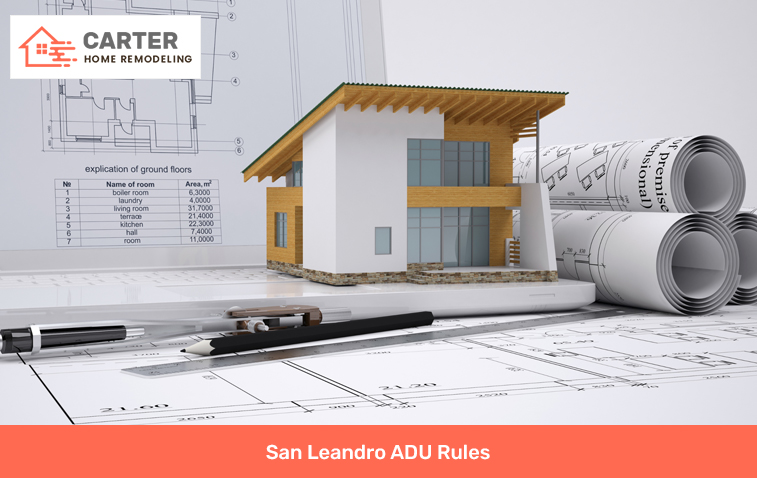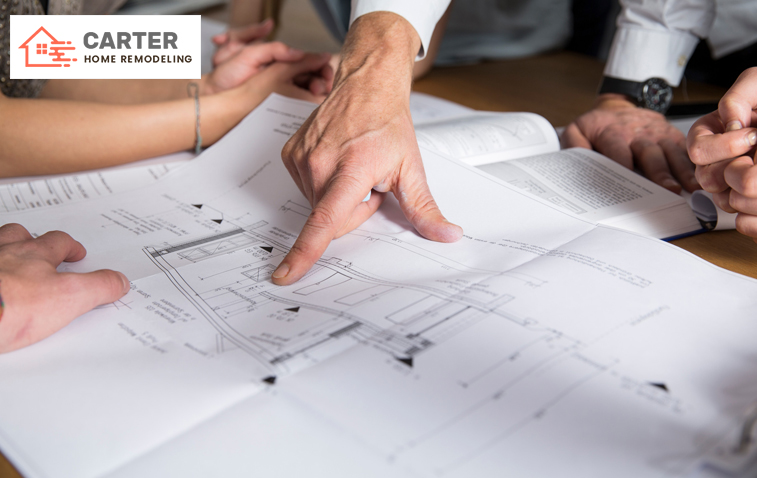Navigating the world of Accessory Dwelling Units (ADUs) can be complex, especially when honing in the City of San Leandro, where the ADU regulations are distinct, offering unique opportunities and challenges for homeowners and property developers.
We explore various aspects of your ADU, including financing options, design considerations, layout planning, and essential rental and legal factors that you should keep in mind.
On our blog, We’re committed to helping you realize your vision on time and budget, ensuring that your ADU serves your needs while adhering to San Leandro’s ADU rules. Read to learn more.

These policies govern the construction, modification, and use of ADUs within city limits. The rules focus on critical areas like size restrictions, parking requirements, and owner occupancy.
Notably, the city has tried to streamline the ADU approval process, making it easier for homeowners to add these valuable units to their property. However, as with any construction project, understanding and complying with these rules is crucial.
Whether you’re planning to build a detached ADU in your backyard or convert an existing space in your home, the San Leandro ADU rules will be your guiding framework.
Building an ADU in San Leandro involves several key steps that need to be meticulously followed:
Before embarking on an ADU project, it’s essential to research and understand the zoning regulations that govern your property. San Leandro has two primary zones: single-family residential (R-1) and multi-family residential (R-M). Within each zone, there are specific rules for ADUs in terms of size, parking requirements, and owner occupancy. These regulations can be found in the city’s Municipal Code.
Once you have a good understanding of the zoning regulations, you can proceed with obtaining the necessary permits and approvals. San Leandro requires a building permit for all ADU projects, as well as any other required permits, such as electrical or plumbing permits. It’s important to note that certain types of ADUs may also require additional approvals from the city’s Planning Department.
These professionals will transform your vision and the regulatory requirements into a viable construction plan. They will also handle the complexities of ensuring that the project adheres to San Leandro ADU rules and regulations, enabling a smoother approval process.
Carter Home Remodeling stands out as a premier choice. Our team of licensed contractors and architects is highly experienced in navigating San Leandro’s ADU landscape. We are well-versed in the local zoning regulations and adept at creating design plans that maximize the utility of your space while aligning with the city’s requirements.
The construction process of an ADU in San Leandro varies based on complexity and adherence to local rules.
It involves obtaining permits, site preparation, foundation laying, frame erection, roof installation, window and door installation, and exterior siding. Inside, electrical, plumbing, and HVAC installations take place, followed by insulation, drywall, painting, and interior finishing. Fixtures and appliances are then installed, and inspections ensure compliance.
The duration can range from a few months to over a year, with regular communication with contractors and architects being crucial for success.
The cost of constructing an ADU in San Leandro can vary depending on factors such as the size of the unit, design complexity, material choices, and contractor rates. Budgeting should also account for unpredictable costs like project delays or changes in material prices.
Some homeowners may qualify for government loans or grants, primarily if the ADU is intended for low-income renters. Depending on your financial situation, consider a combination of these options.
All financial decisions should be made considering the San Leandro ADU rules to ensure compliance and avoid unexpected costs. Proper budgeting and financing will not only ensure that your project is viable but will also maximize the return on your investment.
When conceptualizing the design and layout of your ADU, specific considerations are crucial to maximize functionality and aesthetic appeal while adhering to the San Leandro ADU rules.
Firstly, the size and location of the ADU of the primary dwelling can significantly influence the layout. It’s essential to consider factors such as privacy, access to sunlight, and the flow of movement between spaces.
Secondly, the intended use of the ADU can inform the design decisions. For example, an ADU for rental income might be best designed with durability and space efficiency. At the same time, an ADU for personal use could be tailored to your unique aesthetic and lifestyle preferences.
Lastly, consider incorporating sustainable design principles. This could involve designing for natural ventilation and daylighting, using energy-efficient appliances, and selecting environmentally friendly materials. These choices reduce environmental impact, but they can also enhance living comfort and potentially contribute to lower utility bills.
Start your journey today by contacting us for a consultation. Let’s create something extraordinary together!

San Leandro has specific laws governing rental properties, and it’s crucial to familiarize yourself with these regulations to ensure legal compliance.
Landlords in the city must follow San Leandro ADU rules and adhere to building codes to ensure the safety and habitability of rental properties. Fair housing laws also prohibit discrimination based on race, religion, or disability.
The rental agreement is a critical document that legally binds landlords and tenants, outlining their responsibilities and rent details. Rental income is taxable, but certain expenses may be deductible. Insurance coverage is crucial for protecting against financial losses, and respecting tenants’ privacy rights is essential.
Remember, while renting out an ADU can provide a valuable source of income, it also comes with legal responsibilities. Ensure you are fully informed and prepared to handle these duties before renting your accessory dwelling unit.
Constructing an ADU in San Leandro requires careful consideration of local regulations and legal responsibilities. Despite the complexities, the potential benefits, such as additional living space or rental income, make it a rewarding endeavor. With proper planning and the right team, an ADU can be a valuable addition to your property that complies with San Leandro ADU rules.
At Carter Home Remodeling, we’re ready to guide you through every step of your ADU journey to ensure a successful project outcome. Reach out to us today to learn more and take the first step toward realizing your ADU vision.